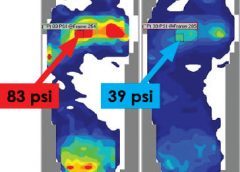By Joan C. Borgatti, MEd, RN
The alarm clock goes off too early, and you jump-start the day with a cup of coffee and a short stack of reasons why you hate your job. Sound familiar? Although you can’t expect to love every aspect of your job, you should expect to get some degree of fulfillment from your career. If you don’t, maybe your job isn’t the problem. Maybe you just need a little career resuscitation to turn things around. First, let’s be clear. I’m not urging you to stay in a job that exposes you to unsafe conditions, a toxic environment, or a toxic boss. Call the code and get out, because emotional and physical well-being comes first. However, know that blaming our jobs for our dissatisfaction may be easier than taking a closer look at the chaos in our lives. It’s even easier not to fix what’s wrong, instead consoling ourselves with the company of like-suffering people. And misery does love company.
If you can’t have the job you love, love the job you have. The daily grind of Herculean demands can wear down even the most conscientious clinicians—to the point where we’re no longer seeking job satisfaction but struggling just to make it through the day. But you can turn things around. To enhance your job satisfaction, try these sure-fire methods. (Okay, maybe they’re not sure-fire, but they’re sure worth a try.)
Know when to say no
When your life feels out of balance, any demand will feel as if it’s sucking the living daylights out of you. You’ll be tempted to blame your job, when the truth is you’re giving in to a bottomless pit called “trying to please everyone else.” Learn to say no to the things you don’t want and say yes to more of what you do want. Say no to anything that’s not a priority (making cupcakes for the second-grade class). Say yes to quality time with your family and quality time for you (that painting class you’ve always wanted to take). Key question: How would the quality of your life improve if you started to say no to demands that don’t enhance its quality, and say yes to the things you want more of?
Learn to see the big picture again
Recognize that, in ways you can’t see or perhaps even imagine, you’ve forever touched and changed the lives of the patients you’ve cared for. The ability to touch and heal another person is a gift that’s available to few people in other professions, who struggle to find meaning in what they do. Key questions: In what ways have you helped your patients? What special qualities and skills are uniquely yours to give? How can you make the most of the opportunity to make a difference in patients’ lives?
Attract the positive
When we’re miserable, other miserable people gravitate to us. Soon a collective mindset takes root and the negative “group think” becomes a life-form unto
itself, festering and insatiable. So be careful of the company you keep. Surround yourself with positive people—clinicians committed to making a difference. This will reenergize you and give you a new perspective on your job.
Learn to be what you want
To be more passionate about your job,
focus on the aspects of the job that excite you the most. Passion is an energy form that attracts more of the same. Say, for instance, you’d love to buy a red convertible. One day you go out for a drive and you see red convertibles everywhere! Have more red convertibles suddenly driven off the assembly line? No; your mind is preselecting, or noticing the convertibles, for you. In the same way, you can preselect either more passion or more misery.
Pay it forward
Keep in mind that novice clinicians proceed through a learning curve. Rather than moan about how inexperienced they are, take one under your wing and turn her or him into the sort of clinician you’d want at your bedside if you were ill. You’ll rediscover your profession through this clinician’s eyes.
Communicate cleanly and ask for what you want
People can’t read your mind. To get more of what you want and less of what you don’t want, learn to communicate in a clean, neutral way. Let’s say you consistently wind up with the more difficult patient assignments. And let’s assume your boss does that because you’re the most clinically experienced clinician—not because she’s the devil incarnate. You can respond in one of two ways.
• Gripe to a coworker: “Can you believe she gave me that workload again?”
• Communicate with your boss cleanly and neutrally: “Lately it seems you’ve given me the more difficult patient assignments, and I appreciate your faith in me. Is there some way we can give other clinicians a chance to gain more experience caring for difficult patients? I’d be happy to act as a resource for them.”
See the difference? The first response does nothing to change the situation; it simply fuels the collective misery mindset. The second response communicates to the boss in a respectful, appreciative way (yes, bosses need appreciation, too!) and seeks a solution that pleases everyone.
Take action and follow your STAR
Using the mnemonic device “STAR” can guide you toward actions that increase your job satisfaction.
Success on your terms. We all define success differently. If you grew up in a family of college professors, chances are the healthcare field didn’t fit your family’s definition of success; your job dissatisfaction may stem from your inner turmoil over not meeting your family’s expectations. To key into these expectations, recall the “you should” and “you ought to” messages you heard as a child.
Key question: Take a moment to think about what success in your career would look and feel like. Then complete this sentence: “I know I will be successful when I have/I am _________.”
True north as your guide. A large part of how we judge ourselves, our worth, our success, and our happiness hinges on how other people see us. But true success, true happiness, and true job satisfaction are determined from within, by your inner compass. The captain of a ship must always know where true north is, because it never changes (much like our core values). He must know the difference between true north and compass north. Unlike true north, compass north is affected by the earth’s magnetic pull. In life, compass north is the magnetic pull of “you should do this” and “you ought to do that” messages. For instance, if you’re a skilled wound care clinician but have always been particularly passionate about lymphedema, you may dislike your job. That’s because you’ve ignored your true north (inner truth) and given in to compass north (fear of walking away from those current skills, and so forth). Don’t be afraid to follow your true north.
Key question: What steps can you take right now that will move you closer to your true north?
Assess and understand who you are. Most of us can articulate what our strengths are. But that’s not enough. To get more enjoyment from your job, you must stretch and exercise your strengths and look for ways to use them. If the opportunities aren’t there, create them.
Let’s say you’re the one everyone turns to for help when there’s a patient with a lower extremity ulcer. To leverage that strength, offer to hold an education program.
Key questions: List your strengths, and then ask yourself: How can I leverage these? If you’re too humble to recognize your strengths, give yourself 20 lashes (figuratively speaking); then ask a trusted colleague, “What do you see as my strengths?”
Risk it all (within reason). When we play it safe, our lives and careers can be pretty dull. We’re meant to push the envelope and stretch our capabilities. It puts the juice back in our lives and helps us grow and feel more alive. Nothing shakes out the cobwebs and brings excitement back to your career more than taking a risk. With every risk comes the threat of failure, but know that failure is just another form of data that helps you readjust and move forward. Don’t give failure more power than your successes.
Key questions: If you weren’t afraid, what risks would you consider taking to enhance your career? What’s holding you back?
Embrace change
An Eastern saying goes something like this: You can stand by a river, but you can never put your feet in the same place twice. The river is your life. It’s not stagnant; it’s ever changing. Nothing in life stays the same—not personal circumstances, relationships, or careers. You aren’t the clinician you were 10 years ago or even last year. So tweak your professional life to better reflect the clinician you are today. With a little attention, you could make your job the career of your dreams.
Selected references
Bird J. Do you need to love your job? Not necessarily. www.worklifebalance.com/love-your-job.html. Accessed May 21, 2012.
Borgatti J. Frazzled, Fried…Finished? A Guide to Help Nurses Find Balance. Borgatti Communications; 2004. www.joanborgatti.com and www.booklocker.com.
Colvin C. How to love the job you’ve got. www.womentodaymagazine.com/career/lovejob.html. Accessed May 21, 2012.
Johnson Montesol S. How to love the job you’ve got. http://developmentcrossroads.com/2011/01/how-to-love-the-job-you%E2%80%99ve-got/. Accessed May 21, 2012.
Joan C. Borgatti, MEd, RN, is the owner of Borgatti Communications in Wellesley Hills, Mass., which provides writing, editing, and coaching services. You may e-mail her at [email protected].
Read More



